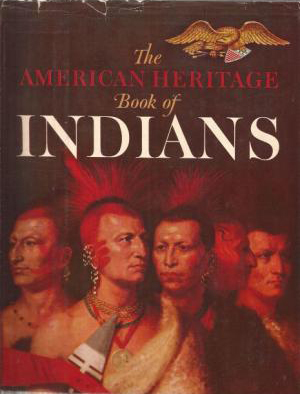TL;DR
The American Heritage Book of Indians offers a richly illustrated exploration of Native American history and culture, emphasizing their interactions with one another and European settlers, while addressing significant themes in their shared heritage.
What is The American Heritage Book of Indians about
In The American Heritage Book of Indians, author William Brandon provides a comprehensive overview of Native American history, culture, and influence. The book is lavishly illustrated, featuring art and photographs that bring the stories of various tribes to life. It delves into the complex relationships among Native Americans themselves and between Native Americans and European settlers, highlighting both the cultural exchanges and conflicts that shaped their histories. Written in a manner accessible to readers of all ages, Brandon's work serves as an important reference for understanding the rich tapestry of Native American life and the challenges they have faced throughout history.
The American Heritage Book of Indians 5 Key Takeaways
Cultural Diversity
The book highlights the vast diversity among Native American tribes, each with distinct languages, customs, and beliefs, showcasing the richness of their cultural heritage.
Influence of Native Americans on Settlers
Brandon discusses how Native American practices, knowledge, and resistance influenced the settlers' ways of life, particularly in agriculture and land management.
Historical Relationships
The text explores the intricate relationships between different tribes and European settlers, detailing both cooperation and conflict throughout history.
Art and Representation
Illustrations play a crucial role in the book, depicting not just historical events but also the beauty and complexity of Native American art and symbolism.
Modern Challenges
The book addresses contemporary issues faced by Native Americans, including cultural preservation and socio-economic struggles, thus connecting past and present.
Top The American Heritage Book of Indians Quotes
- "The history of Native Americans is not just a story of conflict, but one of resilience and cultural richness that continues to thrive today."
- "Through art and tradition, Native Americans have woven a legacy that speaks to the strength and diversity of their cultures."
Who should read The American Heritage Book of Indians?
This book is ideal for readers interested in Native American history, culture, and art, including students, educators, and general audiences seeking to deepen their understanding of Native American contributions and challenges throughout history.
The American Heritage Book of Indians Best Reviews
- "A visually stunning and informative work that captures the essence of Native American culture and history." - Booklist
- "Brandon's thorough research and engaging writing style make this an essential read for anyone interested in Native American studies." - Publishers Weekly
People also liked these summaries
The American Heritage Book of Indians FAQs
What does the term 'Injun' refer to?
'Injun' is a historically derogatory term derived from a mispronunciation of 'Indian' and is now considered offensive. It originated in the 17th century and was used to mock Native Americans.
Why is understanding Native American history important?
Understanding Native American history is crucial for recognizing the diverse cultures and contributions of indigenous peoples, as well as acknowledging the historical injustices they have faced and continue to confront today.
